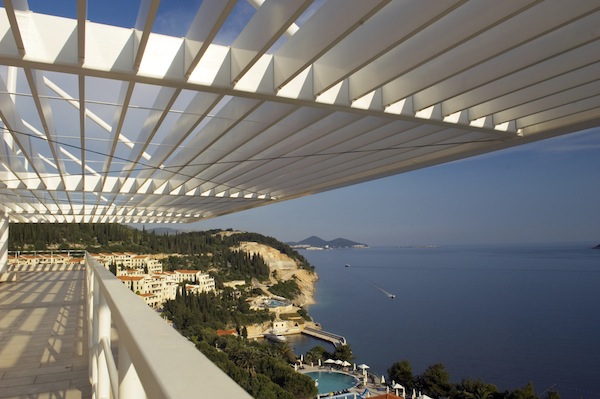“The reason we invested here is because we’ve seen, and been offered, everything that’s available in Croatia and there is nothing that we felt fits our vision for luxury five star real estate. And we believe Croatia is one of last remaining unspoilt canvases in Europe to develop luxury hospitality…” If leading by example were a mantra, then Io Adria are certainly making a point of that, and putting their money where their mouth is.
We’re distracted for a moment by the sumptuous wine that’s just been poured, “This stuff is produced just up the road,” Julian tells me, “in an area called Peljesac, it’s an area that’s also famous for its oysters and shellfish, so you’ll dine well here. This restaurant, in fact, is called Tartufo, which is Croatian for ‘truffles’, many of which come from Istria in the north of the country. They make a liqueur here with truffles, we’ll try some later…the reason we have such fine home-grown products is, don’t forget, that Croatia is almost the mirror of Italy across the Adriatic. It’s coastline and climate are similar to its Italian neighbour, so we have truffles, fine wine and olive oil. But you’d never think it because it’s not been on the map before. Italy gets all the press but here in Croatia, it’s just as good.” He breaks into a wry smile, “Croatians know they’re on to a good thing, that’s why they don’t export it…”
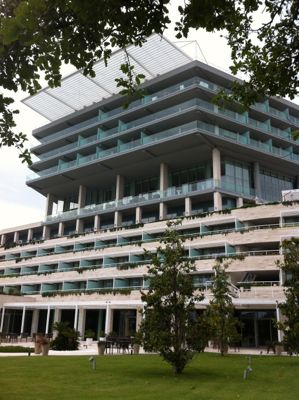 I’m curious as to why it’s a Radisson hotel that takes centre stage in the resort. “Put simply,” Julian says, “they were here already. Radisson were a part of the project before we became involved. Since 2010, however, we now have a franchise agreement with them and it’s working out very well.” I thought the brand more mid-range in its market, a curious partner for the five star resort, but I was showing my ignorance. “To Brits, yes, it’s considered more mid-range,” Julian tells me, “catering often for the meetings and conferences market, but internationally it’s a high-end brand. Prices here start at €170 per night, so it makes it accessible, but their top suites run at €1500 per night.”
I’m curious as to why it’s a Radisson hotel that takes centre stage in the resort. “Put simply,” Julian says, “they were here already. Radisson were a part of the project before we became involved. Since 2010, however, we now have a franchise agreement with them and it’s working out very well.” I thought the brand more mid-range in its market, a curious partner for the five star resort, but I was showing my ignorance. “To Brits, yes, it’s considered more mid-range,” Julian tells me, “catering often for the meetings and conferences market, but internationally it’s a high-end brand. Prices here start at €170 per night, so it makes it accessible, but their top suites run at €1500 per night.”
“This is one of the things we talked about with Radisson. We said, ‘Guys, Dubrovnik is not our competition. We don’t even see Croatia as our competition. We see La Manga, Forte Hills, these guys as our competition; it’s Europe…’ And the reason why? Because there are not many integrated resorts like this in Europe. If you aim low, you’ll get there. So we aimed up there,” he thrust his hand into the air, like a plane taking off, “and having repositioned the resort, we put 2 million Euros in rooms’ revenue into the resort in the first twelve months, an increase of 28%…”
Julian is a mine of information; of facts, stories and statistics. Virtually every question I posed was met with a percentage or a figure of some sort to dress the story of the resort’s success so far and potential to come. I’m curious as to who’s coming to Croatia, is it just in British press we’re seeing articles on the country and its ascendancy on the stage of world tourism? I’m hit with another figure, “We have 92 nationalities who have come through this resort.” Crikey, I thought, that’s half the world. “Half the world stay in our resort,” he says confidently. How on earth does half the world come here? “We have a very good sales and marketing team,” he tells me, “in fact, to our left,” he jabs his knife in the direction of a nearby table, “the marketing director is over there on a table with a Russian PR company.”
Sun Gardens, like many resorts, has a multi-phase development which includes a second hotel in 2-3 years, and then the second phase of hillside properties up to four years after that. It’s a long term investment, knowing that the only way is up for this area. Io Adria’s vision is boutique hotels but with there being nothing else like this along the Croatian coast, they decided to invest because they also saw another chink in the gap in that market.
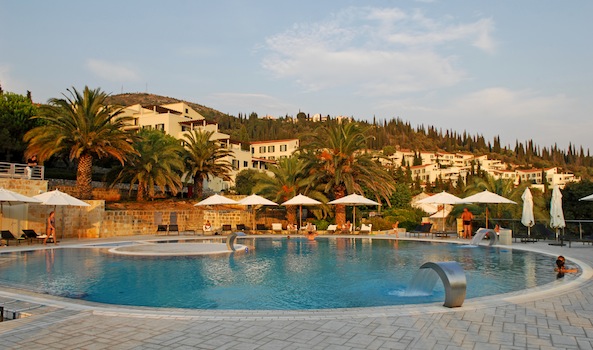
“We are the only resort in this part of Dalmatia that is aimed at the family market and we have a variety of inventory that caters to families; we have thirteen restaurants, three pools, a spa, a sports facility, and a private beach.” It’s what I found intriguing; it’s a village, here, on the Dalmatian coast. As I walked through the resort earlier, I felt I was walking along a promenade, passing restaurants, a pub, a baker, a hairdresser; it was like a coastal village high street. I wonder if such a self-contained operation could be considered inclusive and alienate outsiders, “On the contrary,” Julian tells me, “we encourage it. And I’ll tell you why; I want the guys staying at the Hilton to come here and think, ‘Why the hell am I staying at the Hilton?!'”
“And I’ll tell you something else about our rooms. Our hotel bedrooms are 34 square metres, it’s a good standard size for a 5* hotel. However, our minimum one bedroom apartment is 44 square metres. Now which would you rather stay in?” It feels like you’ve got your own place but with all the benefits of the hotel. “I’m of the opinion that people, especially the Brits, love self-catered holidays and with that in mind, we don’t impose that you have to eat in the restaurants.” It’s a very laissez-faire attitude, I suggest. “Exactly,” says Julian, “and you know what it does? It makes people want to be here even more.”
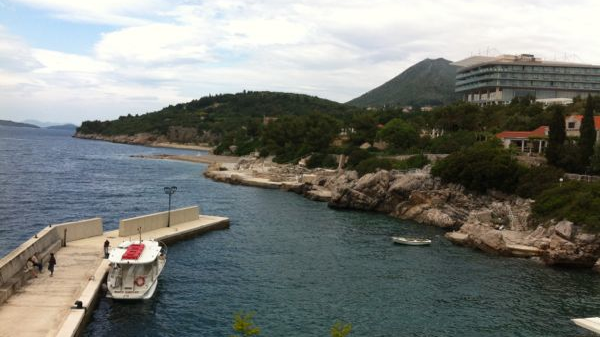
The waiter comes over and places what must be a whole octopus in front of me. Somewhere beneath is a bed of saffron risotto. “I hope you’re hungry,” says Julian. No sooner has he done so, however, than he takes the plate away again, “Sorry, sir, it’s missing something.” An extra limb, I wonder? The waiter’s soon back, however, and he’s added a balsamic reduction to the dish. Julian is dismissive of this slight service faux pas, “By the way, the reason our F&B [food and beverage]margins are so good here is because we serve everything twice,” he jokes, and it exemplifies the lightness of touch, the effortlessness with which I passed my time there.
With two days at our disposal it’s surprising what we managed to fit in. Commandeering the resort’s boat, we ventured to the Elafiti islands opposite, enjoyed a breezy seaside lunch of fish caught barely an hour before, walked around the sleepy island of Lopud, dined in Dubrovnik amid a jazz festival, not to mention indulged in the resort’s offerings of spa and sports facilities. The appeal of the resort, and the destination, speaks for itself if you wanted to stay but what makes it attractive to buy here? I ask.
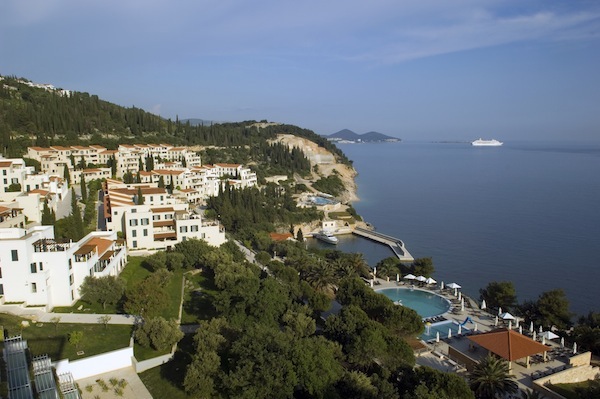
“There is an increase in interest in owning resort-based property overseas with all the headaches taken out of the letting process,” Julian tells me, “and because this is a tourist zone you can’t actually live here, it’s let out and managed by the company. We do a straight 50-50 split of the profits after running fees, at €110 per square metre, are covered.” In peak season, rental yields are impressive; 2-beds command 550 Euros a night, and 3-beds upwards of 1000 Euros per night. The potential profitability versus desirability is demonstrated by an example Julian offers, “We have one client, bought his property, a 44sq metre apartment, came here for his holiday in the peak season but rented an apartment in the village but, as an owner, had full access to the facilities, we then rented his apartment for him, and he paid off his annual fees in two weeks.”
And he’s not the only one making a canny investment. Since visiting, I’ve recently learned that the first phase of 25 one and two-bed apartments have now all been sold. I’m hardly surprised.
And there goes my secret.
View Hotel Info, Rates & Availability

